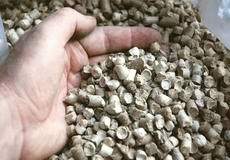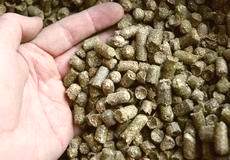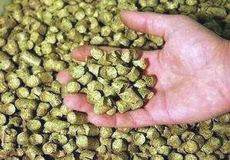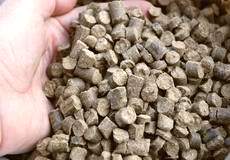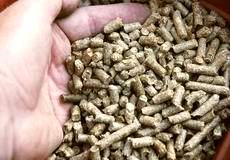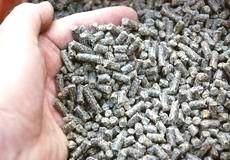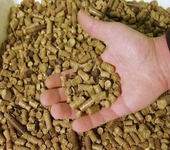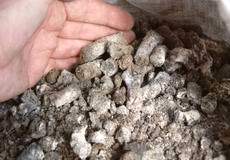

Agripellet, agropellet
Biomass
boilers
For
warm water
- BIO
Automated, pellet, wood chips,
- Farmer
Automated, pellet,wood chips,
wood logs, multifuel
- Automat
Self-loading, automated, pellet, wood chips, multifuel
- Low pressure steam (0,5bar) automated boilers for biomass, pellet, wood chips, multifuel
- Automated brown coal boilers
For warm water or low pressure steam
- Feedlan
control
Solid-fuel handling system
- Moving
floor
Automated solid-fuel store
- Fuel
stores
For solid-fuel
- Augers
- Loader spoon
- Ash
removing
Accessories
Solid fuel types
| Agropellet | |||||||||||||||

|
|||||||||||||||
|
Many materials originated
by agriculture could be used for production of densified biomass
fuels agripellet: Some of them are straw, grain hull waste, sugar
beet waste, pruning, fruit stone, dry fruit waste, cork, grain,
cotton, malt and tobacco waste, with obviously, woody residues.
Agricultural residues refer to the portion of plant material that
remains after a crop has been harvested and separated. EN 14961-6 Non-woody pellets for non-industrial
use This European standard determines the fuel quality classes and
specifications of non-woody pellets for non-industrial use. This
standard covers only non-woody pellets produced from the following
raw material The standard EN 14961 - Part 6: Non woody pellets for non-industrial use is too wide and contain lot of materials, what was not tested by CARBOROBOT, bellow we list materials, what was tested and the boiler can work with him.
All other materials, what is listed in the standard EN 14961-6 was not tested and the Producer can not give any warranty for using. Known pellets what problematic for burning Rape seed if it is too small and dusty - heavy
smoke due to small sizes particles, and emit too much gases in short
time Straw bale and straw chaff not available to burn in CARBOROBOT. How many groups
of agripellet exist? What do we have to watch when using fuels with
high potassium or chlorine content? What do we have to watch when using agripellets
that do not contain potassium and chlorine? Sometimes these pellets burn and gassify similarly to the wood pellets and therefore the wood pellet airflow plate performs better. In this case, the operator has to decide whether the boiler is well controllable and burns without smoke with the wood pellet plate. (wood pellets with lots of bark and large ash content, or reed pellets burn better generally with wood pellet setting) These fuels produce a light and loose ash. What do we have to watch when using oily agripellets? The sunflower seed and refuse grain pellets strongly corrode the boiler tank. Consult the manufacturer before using them as necessary to incorporate stainless steel components. How do we store the pellets? |
|||||||||||||||
| Agripellet samples | |||||||||||||||
|
| EUROPEAN standards for solid biofuels Multipart standard EN14961 | ||||||||||||||||||||||||||||||||||||||||||||||||||||||||||||||||||||||||||||||||
|
There is a lack of wood-based raw materials for pellet production, or it is expensive. In many European countries more straw and grass material than wood is available for the raw material for pellet production. In this context mixed pellets mean pellets that are produced from non-wood and wood materials. Currently, the most commonly used raw materials include miscanthus, straw, reed canary grass and peat. Canada is also considering the use of switch grass and alfalfa as agricultural raw materials for fuel and feed. The combustion of mixed pellets is difficult due to the ash content, its melting and slagging tendencies, and emissions. Straw is the most important
alternative material. According to estimates the straw harvest in
Europe is nearly 23 million tons of dry biomass (present European
usage of pellets is under 10 million tons and the production of
alternative pellets about 400 000 tons). The combustion characteristics
of different straw species vary. The ash content is rather high,
about 5%.The characteristics of some key raw materials are shown
in Table
|
| EUROPEAN standards for solid biofuels Multipart standard EN14961 |
|
In aspect of the heating boiler there is two main biomass pellet group: Wood
pellet made from woody
materials,(mainly sawdust) The most important different between the two pellet types is the ash content. The wood pellet have 05-1% ash and the agripellet have 3-10% ash. For the wood pellet designed boilers not recommend to use agripellet due to high ash contetnt. The agripellet cheaper than woodpellet. For the agripellet using need specialy designed boiler as CARBOROBOT Standards have been made for controlling the market quality of pellets in Europe. “Multipart standard EN14961 6 – Pellets” was published in 2010. The standard includes both wood pellets for non-industrial use (part 2) and non-wood pellets for non-industrial use (part 6). Pellet standards are targeted at non-industrial use in small-scale appliances, such as households and small commercial and public sector buildings.In “specification and classes” (EN 14961-1), classification is based on origin, source, major traded forms and properties. Product standards for The raw material for agropellets
can be BIOfuel pellet EN 14588, term
4.23
|
Copyright © 2023 CARBOROBOT
Contact informations tel/fax:+36-13852-862
info@carborobot.com

